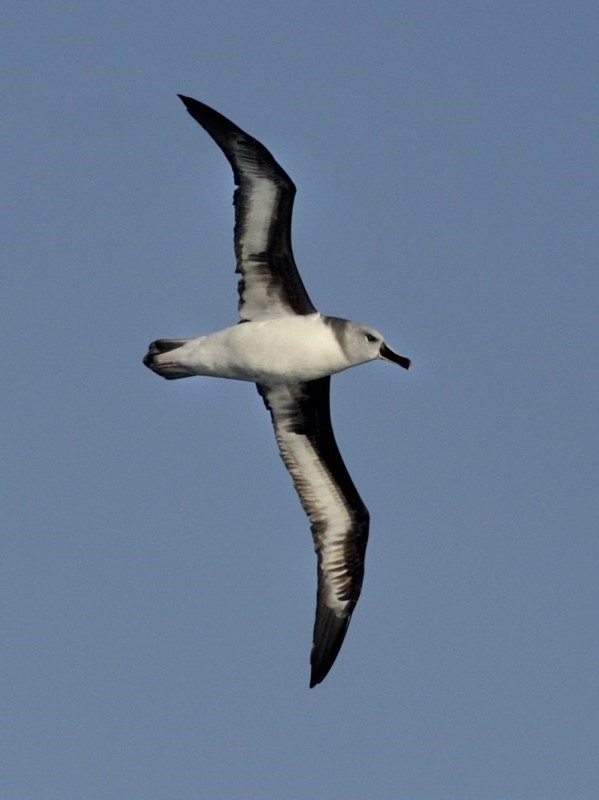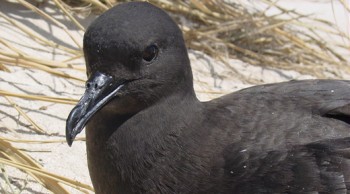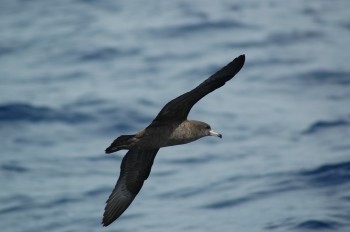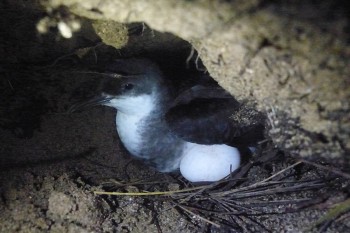Kylie Scales (Plymouth Marine Laboratory, UK) and colleagues have published early view in the journal Diversity and Distributions on modelling foraging of Grey-headed Albatrosses Thalassarche chrysostoma.
The paper’s abstract follows:
“Aim
Ecological niche modelling can provide valuable insight into species' environmental preferences and aid the identification of key habitats for populations of conservation concern. Here, we integrate biologging, satellite remote-sensing and ensemble ecological niche models (EENMs) to identify predictable foraging habitats for a globally important population of the grey-headed albatross (GHA) Thalassarche chrysostoma.
Location
Bird Island, South Georgia; Southern Atlantic Ocean.
Methods
GPS and geolocation-immersion loggers were used to track at-sea movements and activity patterns of GHA over two breeding seasons (n = 55; brood-guard). Immersion frequency (landings per 10-min interval) was used to define foraging events. EENM combining Generalized Additive Models (GAM), MaxEnt, Random Forest (RF) and Boosted Regression Trees (BRT) identified the biophysical conditions characterizing the locations of foraging events, using time-matched oceanographic predictors (Sea Surface Temperature, SST; chlorophyll a, chl-a; thermal front frequency, TFreq; depth). Model performance was assessed through iterative cross-validation and extrapolative performance through cross-validation among years.
Results
Predictable foraging habitats identified by EENM spanned neritic (<500 m), shelf break and oceanic waters, coinciding with a set of persistent biophysical conditions characterized by particular thermal ranges (3–8 °C, 12–13 °C), elevated primary productivity (chl-a > 0.5 mg m−3) and frequent manifestation of mesoscale thermal fronts. Our results confirm previous indications that GHA exploit enhanced foraging opportunities associated with frontal systems and objectively identify the APFZ as a region of high foraging habitat suitability. Moreover, at the spatial and temporal scales investigated here, the performance of multi-model ensembles was superior to that of single-algorithm models, and cross-validation among years indicated reasonable extrapolative performance.
Main conclusions
EENM techniques are useful for integrating the predictions of several single-algorithm models, reducing potential bias and increasing confidence in predictions. Our analysis highlights the value of EENM for use with movement data in identifying at-sea habitats of wide-ranging marine predators, with clear implications for conservation and management.”

Grey-headed Albatross at sea, photograph by Kirk Zufelt
With thanks to Richard Phillips for information.
Reference:
Scales, K.L, Miller, P.I, Ingram, S.N., Hazen, E.L., Bograd, S.J. & Phillips, R.A. 2015. Identifying predictable foraging habitats for a wide-ranging marine predator using ensemble ecological niche models. Diversity and Distributions DOI: 10.1111/ddi.12389.
John Cooper, ACAP Information Officer, 09 November 2015

 English
English  Français
Français  Español
Español 


